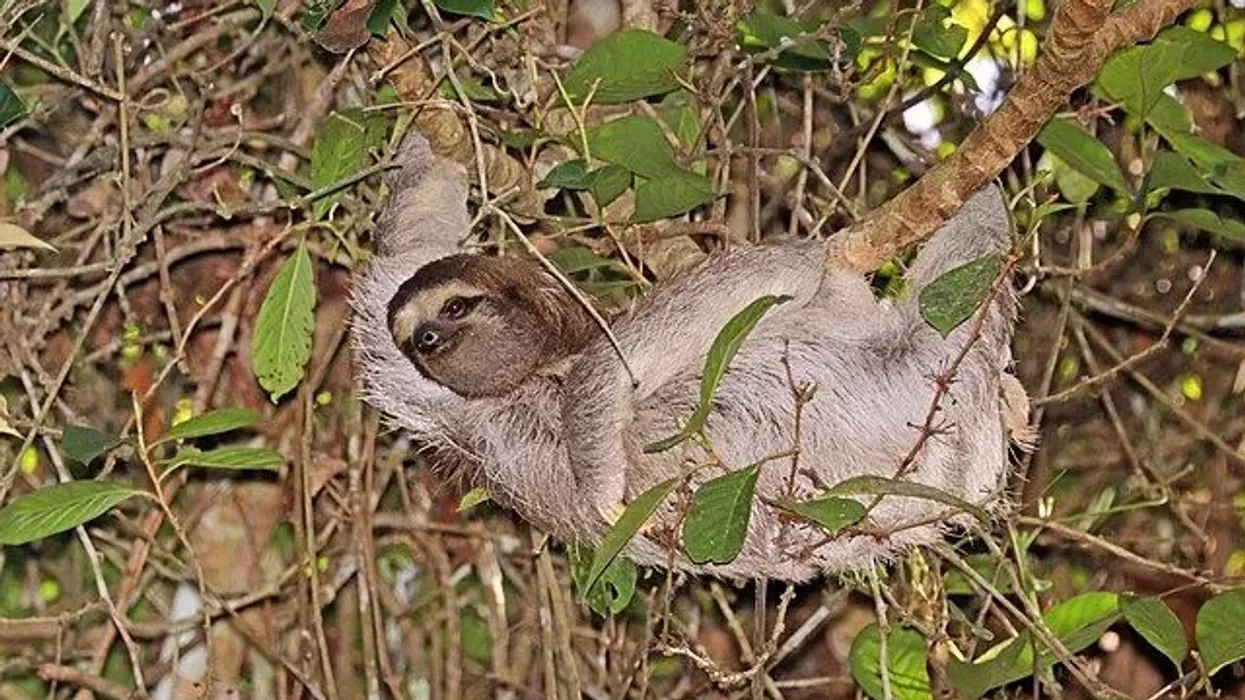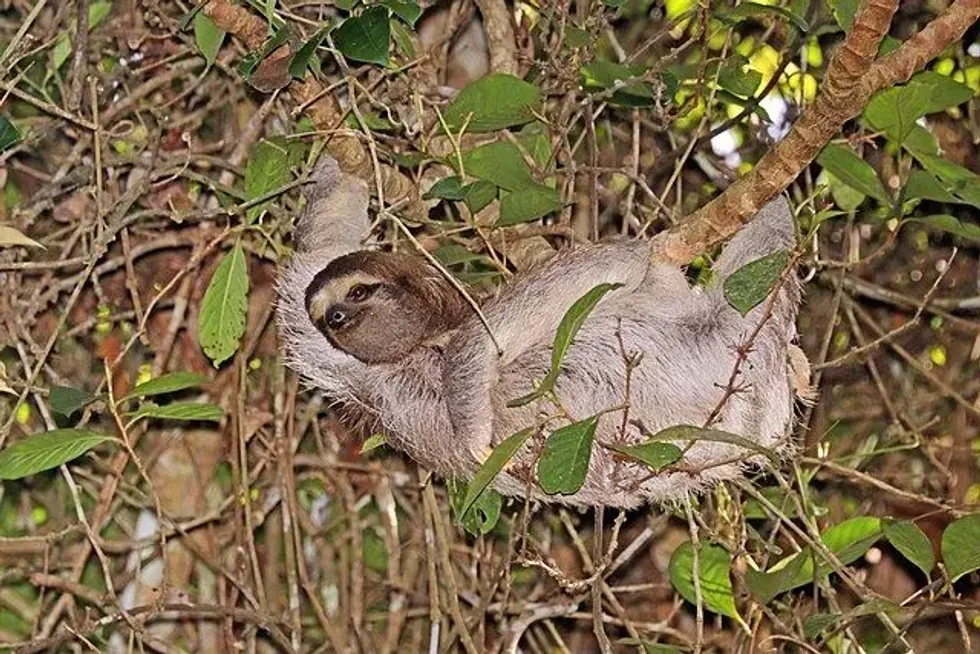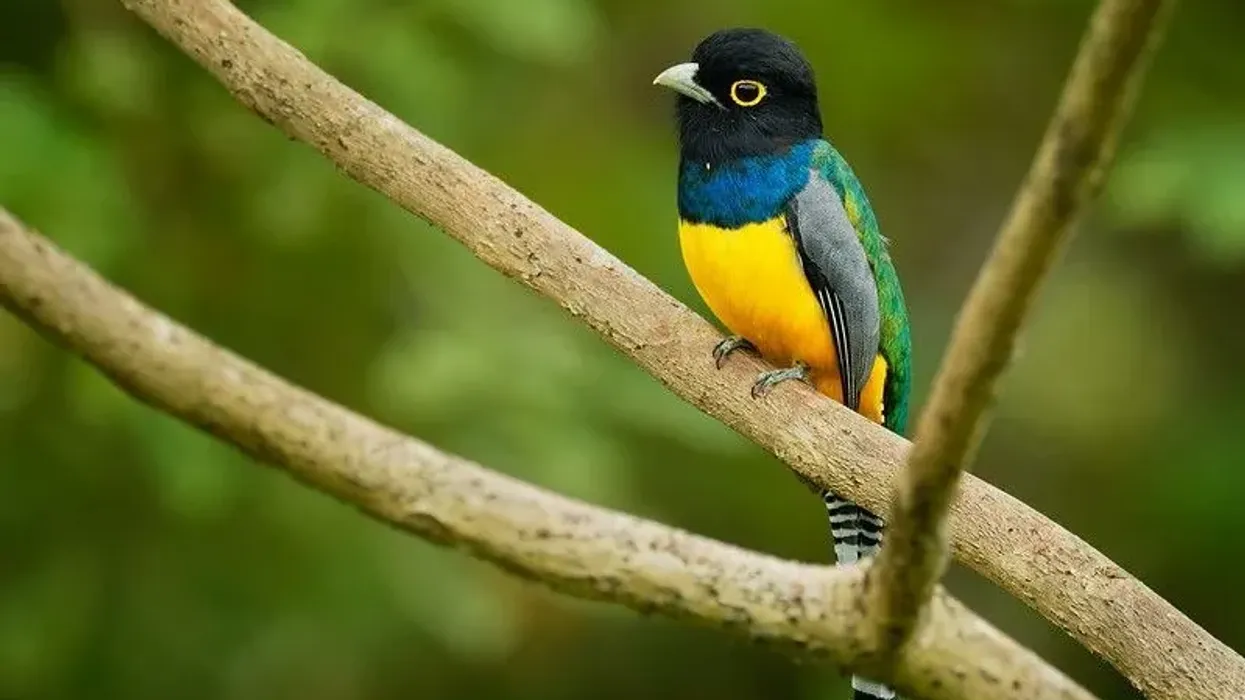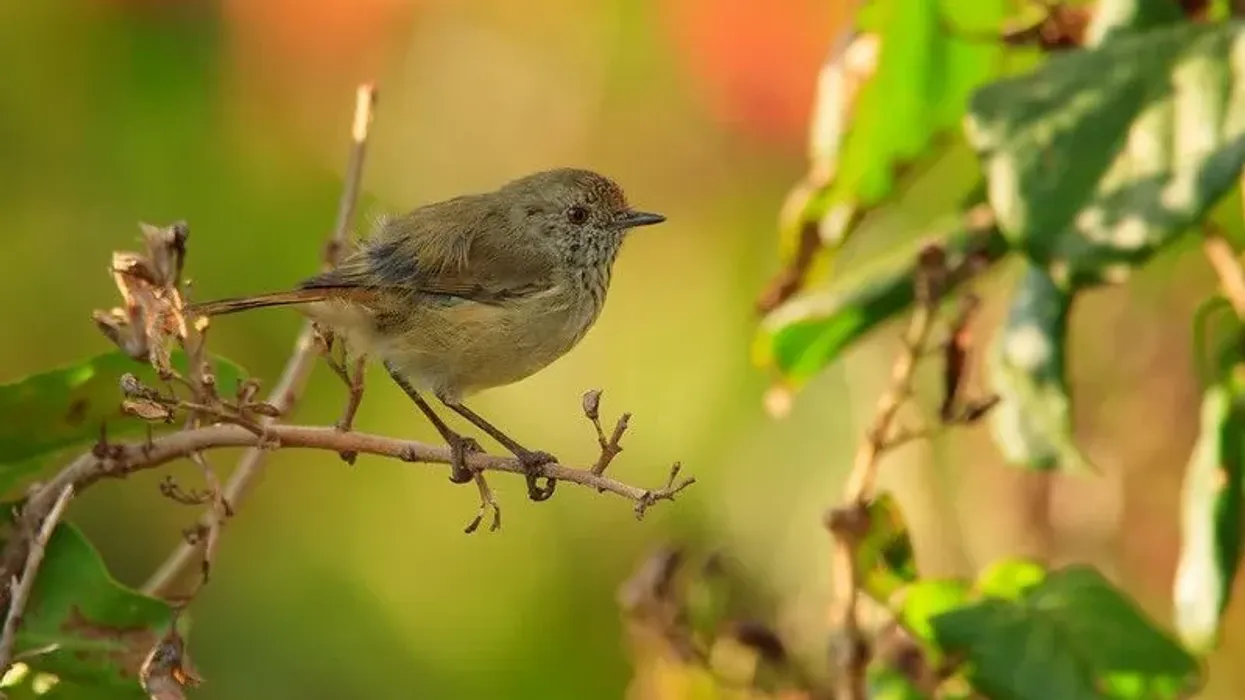Brown-throated sloths (Bradypus variegatus) are a type of sloth with a round-shaped head and tiny ears. They can be spotted in the regions of Central America as well as South America.
They spend the majority of the day in trees and hardly come down to the ground. The habitats for these animals range from evergreen forests to dry forests.
This sloth is known to possess sharp claws that can cause harm to a human being and have pale brown-colored fur all over its body. These South American sloths are mainly solitary creatures and can mainly be found moving alone.
They are herbivorous by nature and their diet includes fruits, flowers, and leaves. Sloths in general are not very friendly creatures and hate to be touched.
Therefore, keeping one as a pet can turn out to be extremely difficult for a person. Females give birth to one offspring at a time and the gestation period usually lasts for five to eight months.
Keep on reading to know more about brown-throated sloths. Check out takin and golden takin to learn more about other animals.
Brown-Throated Sloth Interesting Facts
What type of animal is a brown-throated sloth?
Brown-throated sloths (Bradypus variegatus) are a kind of sloth that can be seen living in the regions of Central and South America.
What class of animal does a brown-throated sloth belong to?
The brown-throated three-toed sloth (Bradypus variegatus) belongs to the Mammalia class of animals.
How many brown-throated sloths are there in the world?
The exact population of these sloths is not yet known. However, they do not have any imminent threats that will lead to their extinction in the near future. There has been a slight decline in their numbers over the years because of deforestation.
Where does a brown-throated sloth live?
Brown-throated three-toed sloths mainly live in the regions of Central and South America and can be seen in habitats that range from Costa Rica, Panama, Peru, Bolivia, and Colombia.
What is a brown-throated sloth's habitat?
The brown-throated three-toed sloth inhabits a variety of habitats that range from an evergreen forest to dry forests. They can also be spotted in high altitudes. They are good swimmers and can be seen on branches of trees, especially those trees which are situated at a place with good exposure to sunlight.
Who does brown-throated sloth live with?
Brown-throated sloths are typically solitary animals and can be found moving alone, except during the mating season when they can be seen in small groups. They spend the maximum time of the day on trees and hardly come down to the ground. During the breeding season, female sloths are more likely to form small groups than males.
How long does a brown-throated sloth live?
The typical lifespan of brown-throated sloths in the wild ranges from 30-40 years.
How do they reproduce?
The breeding season for these sloths differs on the basis of the regions. This species is known to mate with one mate for life, which means that they are monogamous.
The gestation period for females lasts for five to eight months, following which the females give birth to one young cub.
During the initial five months after they are born, baby sloths are known to cling onto their mother's fur and drink the milk that is created by her body. They develop the ability to eat solid food after almost four days of being born.
What is their conservation status?
The conservation status of the brown-throated three-toed sloth(Bradypus variegatus) is currently listed as Least Concern under the International Union for Conservation of Nature. There has been a slight decline in their population over the years because of habitat loss.
Brown-Throated Sloth Fun Facts
What does a brown-throated sloth look like?
Brown-throated sloths as the name suggests have pale brown-colored fur all over their body, except on the regions of their throats and forehead which are covered with a slightly darker shade of brown.
Their face is comparatively pale-colored fur with two dark brown colored stripes of fur running down both the sides of its eyes. These sloths are known to possess small teeth and have three fingers on their feet, therefore they are also called three-toed sloths.
Their heads are round in shape and they have very small ears that are not visible clearly from a distance.
How cute are they?
Sloths are very cute, especially the brown-throated three-toed sloths. Their pale brown coloration of fur on their body and the weirdly positioned strip of dark-colored fur that runs down their eyes, give them an adorable look. They spend the majority of the day swinging from branches of trees and move very slowly.
How do they communicate?
Mostly found on the branches of a tree, brown-throated three-toed sloths, particularly the females, emit different kinds of sounds especially during the breeding season. They are known to produce a loud sound to entice the males during the breeding season. Baby sloths are also known to produce various types of sounds to communicate with their parents.
How big is a brown-throated sloth?
A male and female of this species are similar in size and there is no difference in their body size on the basis of their gender. The average size of the brown-throated three-toed sloth range from 17.7- 23.6 in (45-60 cm) in length. They are way smaller than giant ground sloths.
How fast can a brown-throated sloth move?
Sloths are lazy animals who spend almost 15-18 hours per day sleeping and hardly come down to the ground from the branches of a tree. The exact speed of brown-throated sloths is not known. However, sloths are known to move at a maximum speed of 0.2 mph (0.3 kph) when they are threatened.
How much does a brown-throated sloth weigh?
The average weight attained by adult brown-throated three-toed sloths ranges from 7.7-11.4 lb (3.5 -5.2 kg). They are the same size as any average three-toed sloth.
What are the male and female names of the species?
There is no gender-specific name for this species of sloths or any other species of sloths in general. A male is called a male brown-throated three-toed sloth and females are called female brown-throated three-toed sloths.
What would you call a baby brown-throated sloth?
A baby brown-throated three-toed sloth is called a cub.
What do they eat?
This species of sloth is herbivorous by nature and their diet includes different species of tree, found in the forest where they live. They eat almost everything that a tree has to offer starting from leaves, flowers, and fruits.
They can also be seen occasionally drinking water from rivers, but mostly they get their required water to survive from the food they eat.
Are they poisonous?
No, brown-throated sloths are not poisonous, however, that does not waive off the chances of being attacked by one like a two-toed sloth. They are known to possess sharp claws which can cause some serious amount of damage to a human being.
Would they make a good pet?
Although brown-throated sloths are kept as a pet in some households, it is not advisable to keep one. They are not friendly and are not the type of animal who wants to be cuddled by a human all the time.
The chances of a sloth displaying affectionate behavior towards a human being are rare. Also, since these are wild animals, they also require a lot of maintenance. A suitable and comfortable environment needs to be provided for this species to live comfortably.
Did you know...
Sloths, like the brown-throated sloth, are not extinct as of now. However, some species of sloths like pygmy three-toed sloths have been listed as a Critically Endangered species under the International Union for Conservation of Nature. Poachers and deforestation are the main reasons behind their huge decline in population.
Sloths are known to be sexually active animals.
Most sloths are known to lose their lives to predators such as harpy eagles when they come down to the ground from the trees. Trees are where they spend the majority of the time of the day.
When they come down, it brings them closer to the chances of being attacked by their predators. Also, they are not very fast runners and that acts as a disadvantage in the face of danger. This is also the reason around half the sloths that come down from trees to poop die!
Can sloths kill humans?
No, cases of humans being killed by sloths are not yet known. However, they do possess sharp claws and can readily attack a human being. A sloth is not a friendly animal and can cause some serious damage to a human by using its claws.
Are brown-throated sloths endangered?
No, brown-throated sloths are not endangered. They are currently listed as a Least Concern species under the International Union for Conservation of Nature. However, there has been a slight decline in their population over the years because of the loss of habitat grounds.
Here at Kidadl, we have carefully created lots of interesting family-friendly animal facts for everyone to discover! For more relatable content, check out these Sri Lankan elephant and aurochs facts for kids.
You can even occupy yourself at home by coloring in one of our free printable brown throated sloth coloring pages.









